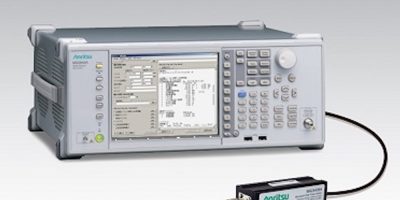Anritsu signal analyser supports efficient tests of pulse radar Tx characteristics
Anritsu has released its pulse radar measurement function MX284059B software option for the signal analyser MS2840A.
As well as adding new functions to the earlier MX284059A, the MX284059B release also supports new interlocked control of the USB peak power sensor MA24406A/18A/40A for automatic high-accuracy transmission (Tx) power and pulse-width measurements. In addition to facilitating pulse-radar field maintenance tests, these new functions will help to reduce production-line test times for more efficient line throughput.
Pulse radars must always operate accurately and reliably because they are used widely for meteorological, shipping, coastguard and aerospace monitoring. Inspection of the Tx characteristics is key for stable pulse-radar operation and conventionally requires various test instruments, including a separate spectrum analyser, oscilloscope, power meter and frequency counter. In particular, when testing Tx spurious emissions, field engineers must create spectrum emission masks (pass/fail base lines) using results from several pieces of test instruments, which is time consuming.
The MX284059B is configured in combination with the MS2840A and MA24406A/18A/40A to support tests of Tx characteristics and replaces the four conventionally required pieces of test instruments. All test stages from data acquisition to spectrum emission mask creation are fully automated. In comparison to its predecessor MX284059A, the MX284059B has a wider pulse-width measurement range for testing high-performance radar, including aerospace and maritime applications using short pulses as well as long-range radar using long-repetition cycles (long pulses).
Key features include: S-, C-, X-, and Ku-band (3Ghz to 15GHz band) pulse-radar Tx tests; automatic tests of Tx power and frequency, pulse width, pulse rise/fall times and repetition frequency, 40dB bandwidth, and spurious emissions, with integrated saving of measured data, measurement screens, and pass/fail results; and evaluation of spurious emissions test results using masks based on the recommendation ITU-R SM.329, SM.1541 and M.1177 with masks superimposed on MS2840A test trace display.




